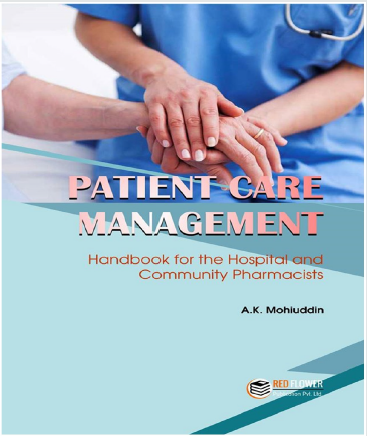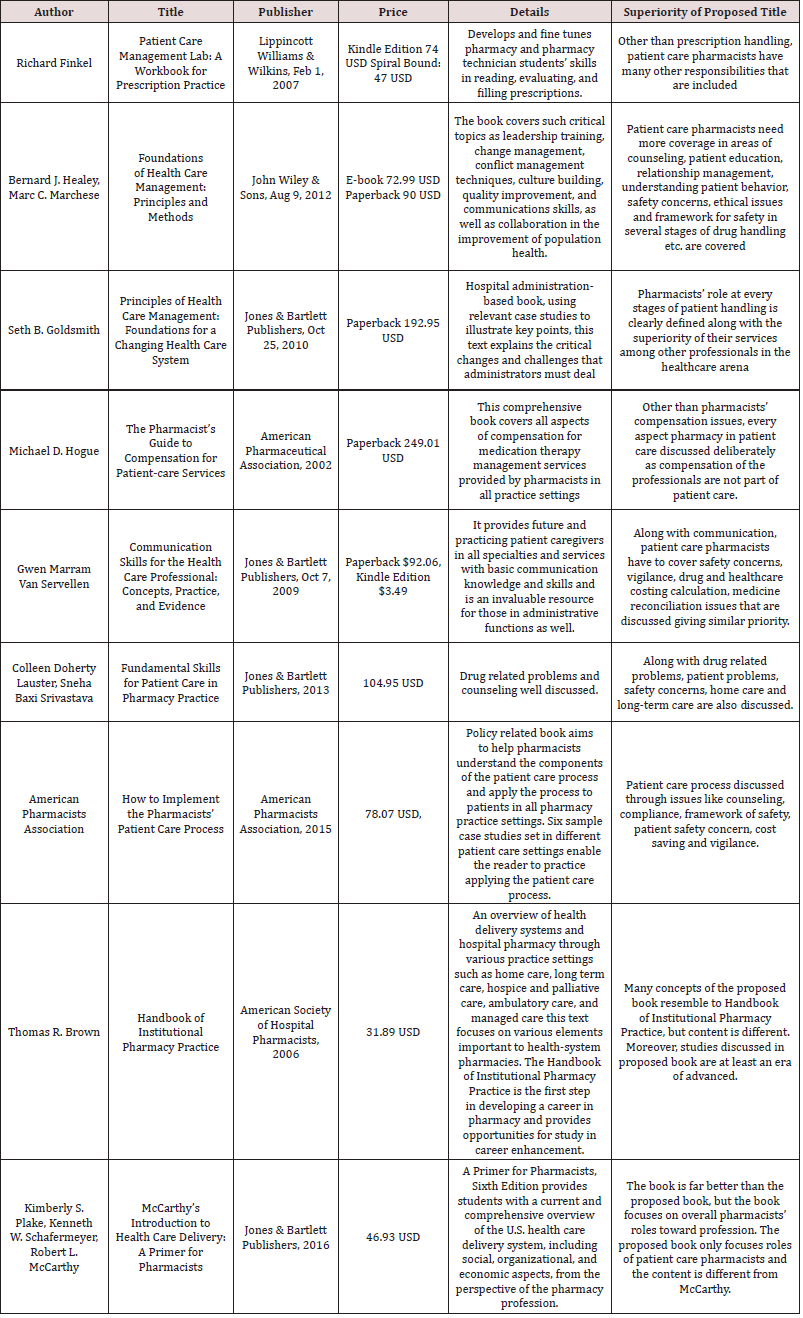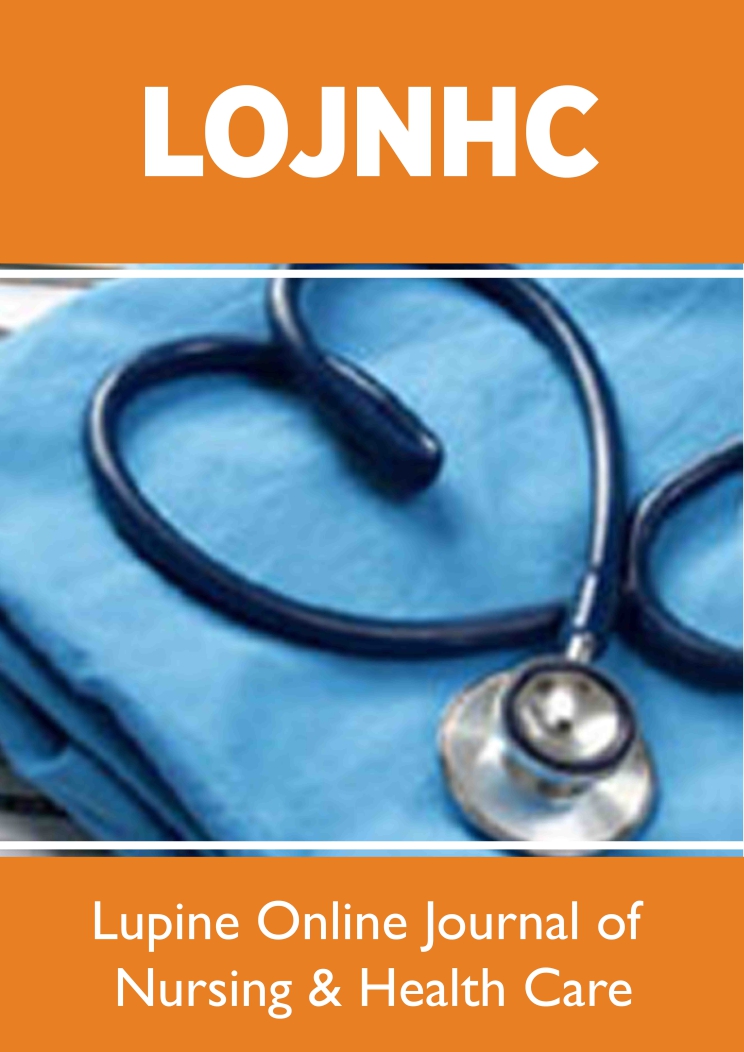
Lupine Publishers Group
Lupine Publishers
Menu
ISSN: 2637-6695
Review Article(ISSN: 2637-6695) 
Patient Care Management Volume 2 - Issue 5
Abdul Kader Mohiuddin*
- Dr. M Nasirullah Memorial Trust, Bangladesh
Received: February 18, 2020; Published: February 25, 2020
Corresponding author: Abdul Kader Mohiuddin, Dr. M Nasirullah Memorial Trust, Bangladesh
DOI: 10.32474/LOJNHC.2020.02.000146
Abstract
Most people on the outside of the health care profession are not familiar with this new role of the pharmacist. The general public has created a stereotypical pharmacist’s picture as being a person who stands behind a counter, dispenses medicine with some instructions to the respective consumer. Pharmacy practice has changed substantially in recent years. Today’s pharmacists have unique training and expertise in the appropriate use of medications and provide a wide array of patient care services in many different practice settings. As doctors are busy with the diagnosis and treatment of patients, the pharmacist can assist them by selecting the most appropriate drug for a patient. Interventions by the pharmacists have always been considered as a valuable input by the health care community in the patient care process by reducing the medication errors, rationalizing the therapy and reducing the cost of therapy. The development and approval of the Pharmacists’ Patient Care Process by the Joint Commission of Pharmacy Practitioners and incorporation of the Process into the 2016 Accreditation Council for Pharmacy Education Standards has the potential to lead to important changes in the practice of pharmacy, and to the enhanced acknowledgment, acceptance, and reimbursement for pharmacy and pharmacist services. As an author, it is my heartiest believe that the book will adjoin significant apprehension to future pharmacists in patient care as most of the portion created from recently published articles focusing pharmacists in patient care settings.
Keywords: Patient Care; Patient Compliance; Patient Counseling; Extemporaneous Prescription Compounding; Framework for Medication Safety; Patient Behavior; Patient Education; Patient Provider Relationship; Patient Relationship Management; Patient Problem Solving and Preventive Care; Pharmacovigilance; Patient Safety; Pharmaco Economics; Long term Care; Community Liaison Pharmacists in Home Care; Pharmacists in Ambulatory Care; Critical Care Pharmacists; Rational Use of Drugs; Surgical Dressing; Medication Risk Management; Medication History Taking and Reconciliation; Drug Related Problems; Medication Reconciliation; Palliative and Hospice Care
Introduction
The goal of high quality cost effective and accessible health care for patients is achieved through team based patient centered care. Pharmacists are essential members of the health care team Figure 1. The profession of pharmacy is continuing its evolution from a principal focus on medication product distribution to expanded clinically oriented patient care services. As a result of this professional evolution, the importance of, and need for, a consistent process of care in the delivery of patient care services has been increasingly recognized by the profession at large. Pharmacists in hospital, community care, dispensing and allied healthcare arena are highly appreciated for their knowledge-based contribution and dedication towards profession (Figure 2). The purpose of the book is to guide the patient care pharmacists in their day to day activities. Along with guidelines, the book encloses ideas about patient dealing, patient rights, ethical decision making, professionalism. At every chapter, the role of pharmacists in that chapter specific issues are detailed explicitly so that a professional pharmacist or a student can figure out his or her do’s and not to do’s in that specific situations. Moreover, further reading references are listed to follow guidelines further. So, the book is an archive of potential references too. Among so many books on clinical pharmacy, hospital and community care pharmacy the role of pharmacists in patient care is rarely highlighted with a very little information. The sector is emerging in both developed and underdeveloped countries. In most of the books, either doctors’ or nurses’ roles are highlighted. The proposed book highlights pharmacists’ roles and responsibilities to the most, separated from those of doctors and nurses, with most recent information obtained from recently published articles of several journals, books, newsletters, magazines etc.
Pharmacist’s Role in Patient Care
Pharmacists help manage complex patients because they look at medications with a different eye than a doctor. One important practice they perform is a “comprehensive medication review” where patients bring in medications, vitamins, supplements, and OTC drugs [1]. Nowadays, the shortage of health personnel, and in particular pharmacists, is a challenging issue that the health systems have to face (Table 1). The use of a new technology such as tele pharmacy can represent a possible option to solve these problems [2]. Up to 50% of ADE and ADE related hospitalizations are judged to be preventable by avoiding inappropriate prescribing. Use of a simple interdisciplinary medication review has been shown to lead to the reduction of inappropriate prescribing and costs, but there was no effect on clinically relevant patient outcomes, possibly due to a lack of power and insufficient observation time [3]. Pharmacists see their patients somewhere between 1.5 and 10 times more frequently than they see primary care physicians [4]. Clinical pharmacists can help patients manage their medicines and reduce their anxiety about taking multiple medicines [5]. Pharmacists also get benefit because there is an increased recognition and respect for the value of the advice and service that they provide [6]. There is a need to increase access to primary care services, control costs, and improve outcomes in health care for patients especially in the management of chronic conditions which puts a strain on health care systems worldwide [7]. Pharmacists’ better access to the patients and their acceptability improve patient care by enabling pharmacists to play an even greater role in the provision of safe and effective unscheduled care, treating common clinical conditions and responding to emergency requests for medicines [8].
Author Profile
Author completed B. Pharm (2004) and M. Pharm (2006) from Department of Pharmaceutical Technology, Faculty of Pharmacy, University of Dhaka. He has completed his MBA (2007) from East West University. He was in faculty of Pharmacy, World University of Bangladesh as an Assistant Professor (Table 2). Along with 8 years of teaching experience, he also worked for reputed pharmaceutical companies in strategic management for 5 years (Tables 3-4). He authored 9 books and many articles on alternative medicines, patient care, marine drug sources and other recent issues of healthcare in several journals and newspapers. He is now acting secretary and treasurer in Dr. M. Nasirullah Memorial Trust.
Conclusion
The Red Flower Publication Pvt. Ltd. is a Delhi (India) based medical and scientific publishing group, delivering services of highest quality with honesty and integrity. The company is currently publishing peer reviewed indexed medical and scientific journals in print and online form. The esteem book was under editing and improvisation from the beginning of year 2019, after copyright agreement signing. The book is eligible to provide learning to both Pharmacy apprentices (mainstream and diploma pharmacists) for their regular courses related to Hospital and Community Pharmacy, Pharmacy Compounding and Dispensing as well as to the allied health professionals who are close to patients in their day-to-day activities. Major limitation of the book lies with the continuous improvement in different aspect of healthcare services around the world that cannot be detailed in a single frame. However, further reading references are given so that a reader can have an idea of sources that can benefit their future learnings. Also, a comparison table is added in Annexure 26, showing a few points that makes the book superior to similar other available books, which is further mentioned that those books obviously have their unique superiority over this book, Patient Care Management (Handbook for Hospital and Community Pharmacists) in terms of their focus on respective subject matter(s). The book solely claims its superiority in terms of focus in detailing Pharmacists’ major roles and responsibilities in patient care.
Acknowledgement
I am grateful to the whole team of Red Flower Publications Pvt Ltd, including Mr. A. Lal (Director), Hema Yadav (Production Manager) who helped & guided with their team members for all their support to the work in this project and make this book project a success. I would like to pay thanks to Dr. Arinze Nkemdirim Okere, Associate Professor of Pharmacy, Clinical and Administrative Sciences, Florida A&M University, USA and Dr. Mamun Rashid of Appalachian College of Pharmacy Oakwood, Virginia, USA for their precious time to review my manuscript and continued inspiration.
References
- AK Mohiuddin (2019) Clinical Pharmacists in Chronic Care Management. Academic Publications India.
- Abdul Kader M (2019) Tele pharmacy Service: Contributions and Controversies. J Public Health Dis Prev 2(1): 102.
- Abdul Kader Mohiuddin (2019) “ADRs and Clinical Toxicology". Acta Scientific Dental Sciences Special Issue 1: 03-04.
- Tsuyuki RT, Beahm NP, Okada H, Al Hamarneh YN (2018) Pharmacists as accessible primary health care providers: Review of the evidence. Can Pharm J (Ott) 151(1): 4-5.
- Abdul Kader Mohiuddin (2019) Pharmacist Patient Relationship: Commitment to Care. Biomed J Sci & Tech Res 21(1).
- Mohiuddin AK (2019) Psychiatric Pharmacy: New Role of Pharmacists in Mental Health. J Psychiatry Mental Disord 4(1): 1-4.
- Karampatakis GD, Ryan K, Patel N, Stretch G (2019) Capturing pharmacists' impact in general practice: An e-Delphi study to attempt to reach consensus amongst experts about what activities to record. BMC Fam Pract 20(1): 126.
- Mohiuddin AK (2018) An In depth of Pharmacist in Prescribing. Journal of Applied Pharmaceutical Sciences and Research 1(4): 11-18.
Editorial Manager:
Email:

Top Editors
-

Mark E Smith
Bio chemistry
University of Texas Medical Branch, USA -

Lawrence A Presley
Department of Criminal Justice
Liberty University, USA -

Thomas W Miller
Department of Psychiatry
University of Kentucky, USA -

Gjumrakch Aliev
Department of Medicine
Gally International Biomedical Research & Consulting LLC, USA -

Christopher Bryant
Department of Urbanisation and Agricultural
Montreal university, USA -

Robert William Frare
Oral & Maxillofacial Pathology
New York University, USA -

Rudolph Modesto Navari
Gastroenterology and Hepatology
University of Alabama, UK -

Andrew Hague
Department of Medicine
Universities of Bradford, UK -

George Gregory Buttigieg
Maltese College of Obstetrics and Gynaecology, Europe -

Chen-Hsiung Yeh
Oncology
Circulogene Theranostics, England -
.png)
Emilio Bucio-Carrillo
Radiation Chemistry
National University of Mexico, USA -
.jpg)
Casey J Grenier
Analytical Chemistry
Wentworth Institute of Technology, USA -
Hany Atalah
Minimally Invasive Surgery
Mercer University school of Medicine, USA -

Abu-Hussein Muhamad
Pediatric Dentistry
University of Athens , Greece

The annual scholar awards from Lupine Publishers honor a selected number Read More...










